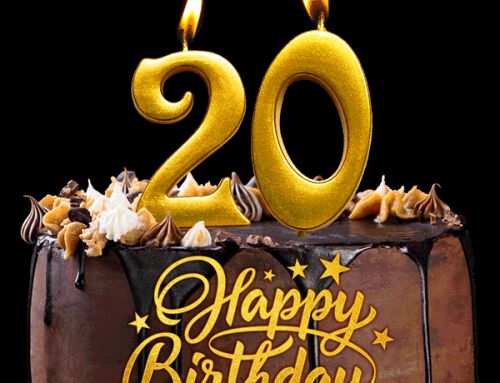The movie Sideways came out in 2004. Merlot has paid its penance.

“In the mid ‘90s, this whole Merlot Mania thing hit,” recalls Chris Figgins, president and winemaking director at Leonetti Cellar, one of Washington’s founding wineries and a critically acclaimed producer of Merlot. “Certainly that was good for us. We became widely known as one of the top Merlot producers in the country.”
At the time, there was even a strong movement afoot to make Merlot Washington’s ‘signature variety’ – the one variety the state would be defined by across the country and around the world.
“There was this push to categorize, California is Cab, Oregon is Pinot, and Washington is Merlot,” says Figgins. “There’s your ‘Beginners Guide to American Wine.’”
The idea was not as absurd as it seems 20 years later, when Cabernet Sauvignon is increasingly dominant and critically regarded in Washington, which has an additional 80+ varieties planted. Back in 1999, Merlot was the most planted red wine variety in the state. Today it remains second overall behind Cabernet – though a very distant second, with 9,071 acres planted compared to 18,608 according to the most recent acreage survey (what a difference 20 years makes). Moreover, the state’s Merlots were heaped with praise from critics, and deservedly so.
“The things people love about Merlot are it has fat and breadth of palate as well as precision of fruit,” says Figgins. “That last part I think is what Washington does better than elsewhere. It has this levity and precision of fruit. You can say that for our Cabernets too, but certainly with Merlot, Merlot can get sloppy in a hurry in other places.”
There is no question Washington Merlots are distinctive from those found elsewhere in the world. The wines not only bring a sense of precision as well as opulence of fruit, they also bring a finer sense of acid and tannin structure than most other regions. Some producers in Washington even blend in Cabernet Sauvignon to soften Merlot, whereas in most of the world, the opposite is true. Some would argue – and I am among them – that Washington Merlots can offer the highest quality of any region in the world outside of Bordeaux.
Leonetti Cellar’s history with the variety dates back to 1977 when the first Merlot vines were planted at the winery. Leonetti produced its inaugural varietal Merlot in 1981 and quickly had success with it, landing in Wine Spectator’s Top 100 list with the 1989 and 1992 vintages (#27, 93 points and #4, 96 points respectively). The latter remains the highest score the magazine has ever given a Merlot, domestic or international.
“Dad got a Spectator cover headline, ‘Who makes America’s best Merlot?’” Figgins recalls of winery founder Gary Figgins. “That was a bit of a watershed moment for putting Leonetti on the map in a big way.” At Wine Enthusiast, where I serve as a contributing editor, Leonetti has the second highest score for any domestic Merlot at 96 points for the 2006 and 2008 vintages (NB: These scores were given by my colleague Paul Gregutt).
While U.S. consumers were in the middle of Merlot Mania, Figgins had his own Merlot moment when the winery harvested the first fruit off its Mill Creek Upland Vineyard in Walla Walla Valley in 1999.
“It had a power and density to it that I had never seen before,” Figgins says. “That was the first time I ever personally got really excited about Merlot.”
Figgins credits this intensity to Upland being in a cooler location with a higher clay content in the soil.
“Boy can you tell,” he says of the increased clay. “That’s where [Merlot] seems to develop power and density, on slightly heavier soils. My guess would be that there’s not that high of a clay content anywhere else in the Columbia Basin. I think that’s pretty unique to Walla Walla.”
For the 2020 Washington Merlot Challenge, I challenged readers to drink at least one bottle of Washington Merlot each month this year. In January, I chose to open Leonetti’s 2012 Walla Walla Valley Merlot.
“The 2012 Merlot is one of my favorite vintages for Merlot – ranking along ‘08, ‘05, and ’98,” Figgins wrote in his technical note on release. “Incredible richness but with a stunning levity that lifts. A dead ringer for some of the finest Pomerol I have ever tasted.”
I agree. The palate is packed full of fruit, showing both power but also a real sense of deftness, along with the structure Washington Merlot is known for. It’s a ‘Wow!’ wine – one of those rare wines where you literally exclaim ‘Wow!’ out loud as you sip it. And not just on the first sip.
“’12 was such a great vintage in Washington,” Figgins says. “It was a textbook year for reds.”
Though Merlot now very much plays second fiddle to Cabernet in Washington in terms of acreage, that doesn’t make the state’s Merlots any less compelling than they were before. Washington Merlot is world class. While the movie Sideways, and the ocean of cheap, low quality Merlots that famous quote called out, changed the grape’s fortunes here and elsewhere, it is time – far past time honestly – to reconsider the variety. Sideways came out in 2004. Merlot has paid its penance.
“Even at the high end, you have to talk about Merlot in the market in terms of pre-movie and post-movie,” Figgins says. “We definitely felt it. That definitely hurt Merlot…But it seems like people have gotten over the whole ‘Sideways effect,’ and Merlot is kind of cool again.”
I’ll raise a glass to that. And, yes, it will be a glass of (f#%king) Merlot.
Image of Chris Figgins of Leonetti Cellar at Figgins Estate Vineyard, not far from the winery’s Mill Creek Upland Vineyard. Photo by Richard Duval.







Leave A Comment